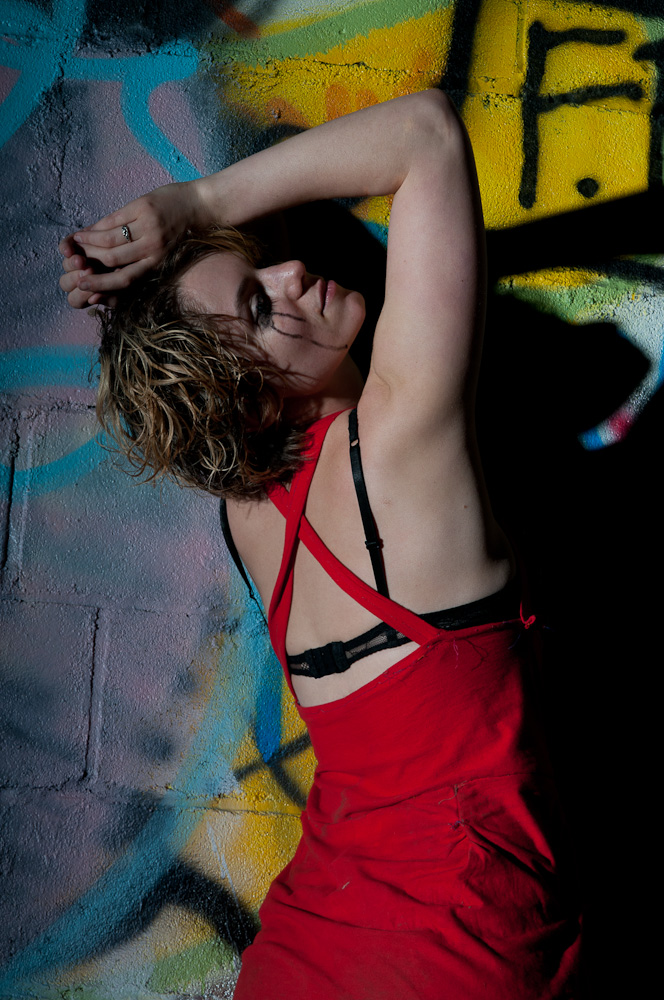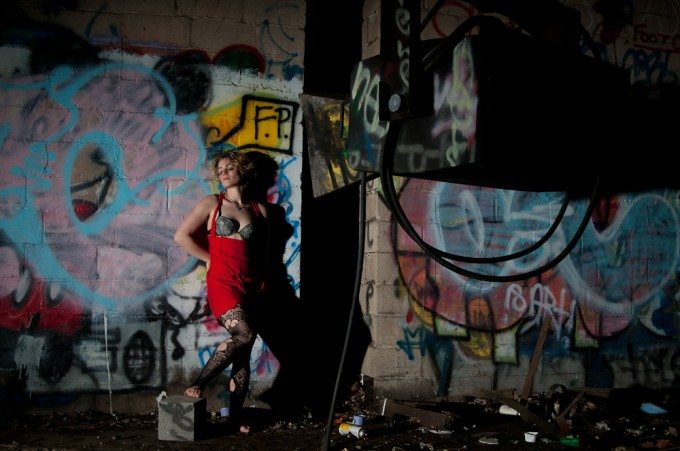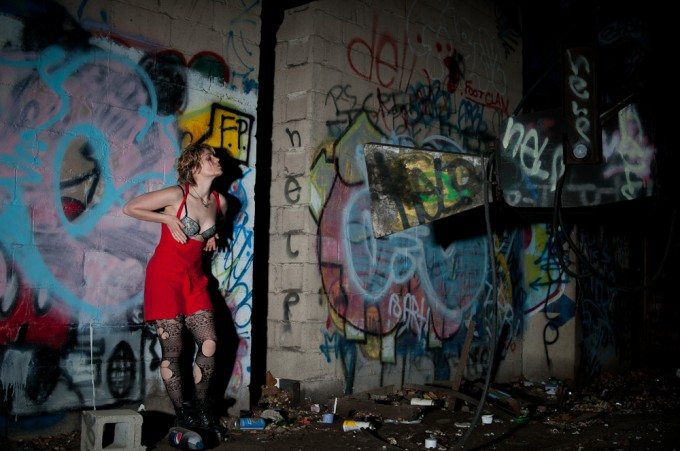Last Updated on 07/17/2011 by Chris Gampat
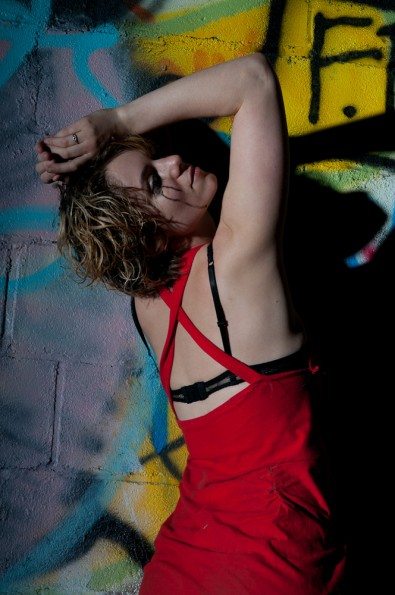
For my first shoot with the Impact LiteTrek Kit, I wanted to see just how small of a kit I could bring while still having the power of the studio with me. I decided to do the shoot in an abandoned factory and bike there with my model. I packed the Kit along with my Nikon D300 with my Tamron lens and Sekonic lightmeter, the Impact PowerSync Wireless, a set of 7″ grids and my most portable stand.
Packing the gear
The whole kit fit into the aluminum case and the LowePro CompuDay Photo backpack. Thanks to the CompuDay’s main compartment design that uses the full height of the bag, even the stand fit inside. I was able to put the backpack on my back and strap the case onto the bikerack of one of the bikes. The minimal padding in the case made me nervous on rough sidewalks but the gear made it both ways unharmed.
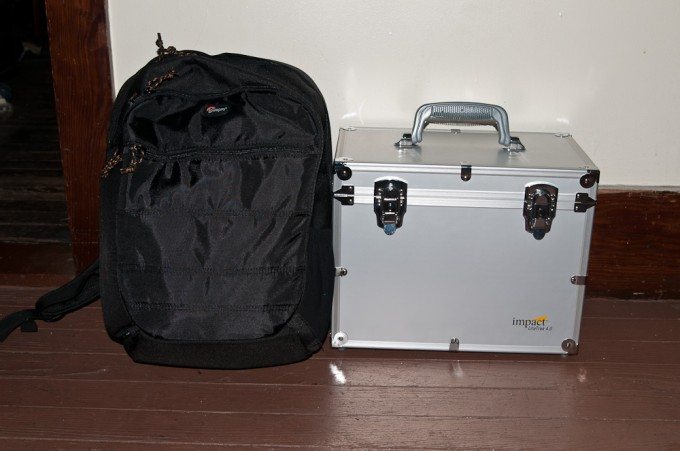
Enough light?
When we got to the factory I set up the lights and measured the output with my light meter. I easily got a setting of f/16 1/250s at ISO 200 without any light modifiers. Since I wanted a dramatic lighting effect I added on a 30º grid, for which I lost 1-1.5 stops so I ended up shooting at f/11-13. This was exactly the range I would usually be looking for so I would say this is ideal. I was shooting at full power so if I were looking for a shallower depth of field this would not be a problem.
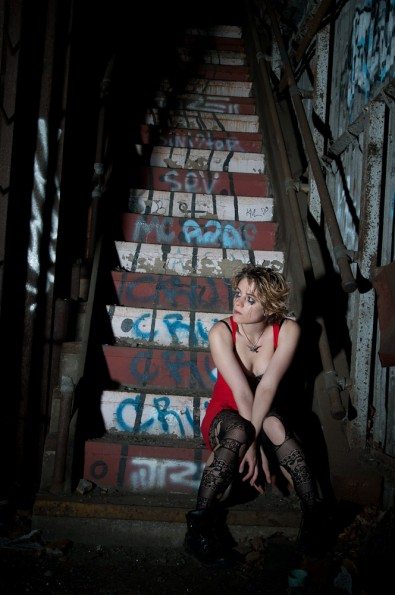
Pushing the limits of the wireless
Since the factory is at least 20,000 square feet I figured I’d push the limits a bit. I walked to the opposite end of the factory and checked the wireless. It triggered the lights with no problem, which means they outperformed their specifications. The power of the lights at that distance is largely lost at this point which confirms my earlier suggestion that the PowerSync will meet 99.9% of the needs you might have for wireless triggers. The exception would be photographers that need to trigger different lights at different times during long exposures or a few other extreme scenarios. You already know if you need this.
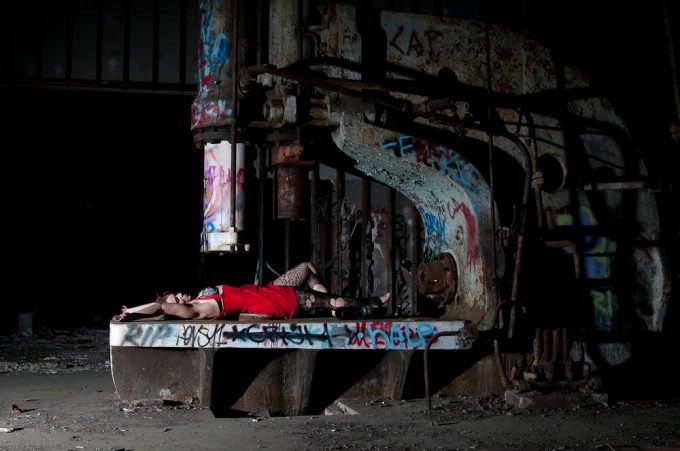
White Balance
Being that I’m not used to thinking the same way when I shoot on location as when I shoot in the studio, I forgot to set my white balance to the lights and shot on Auto, which generally works better as a starting point for location work. Nonetheless the photos came out of the camera exactly as I wanted them, which either indicates that the lights are very well balanced or that I was extremely lucky.
Portability
As we moved around the factory I was able to pick up the lights and battery pack while holding my camera and move everything from point to point in one trip. Very nice. At the end of the shoot, a couple Emo kids wandering around the factory set off an alarm and ran. Not wanting to get caught ourselves, we packed up as fast as we could. Everything was away and out of the factory in less than two minutes, and we were off the location before anyone showed up.
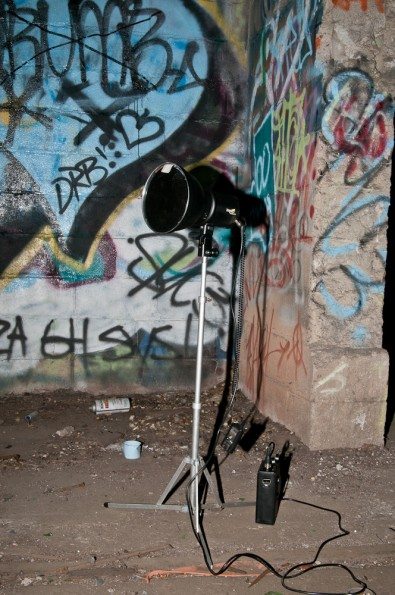
Modeling light problems
I mentioned in my introductory article that I was frustrated that the modeling light couldn’t be controlled, that it only stays on for ten seconds and then turns off to preserve battery power. I mentioned that I thought there would be scenarios when that would be a negative thing and that I would prefer to make that decision myself. I was right as this was a huge problem in this shoot. The factory was very dark and my camera had a lot of trouble focusing, even with AF assist. Walking over to the light and running back to try to focus the camera before it turned off again was unreasonable. In some of the setups it was so dark I couldn’t even see what the model was doing so I had to shoot blind and just hope I got a good shot. I truly hope they redesign this to allow me to choose when it’s worth wasting my battery power on the modeling light
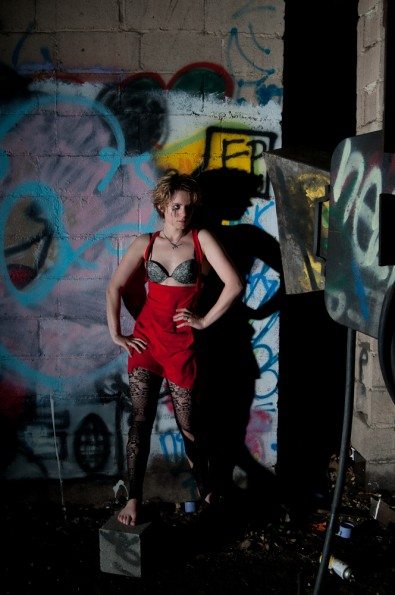
Conclusions
I got exactly the look I wanted in a rather extreme environment with no power and gear that fit on a bicycle. This can only be looked at as a win. I had some issues with focusing that I think should be fixed by allowing me to set how long the modeling light stays on, but I made it work. I had some issues with stand stability which I didn’t mention since it’s not part of the kit, but I was able to make that work as well. The scenario I tested could be closely approximated with a flash unit on a stand or held by an assistant, but was certainly more accurate with the strobe head. However in my next tests I will bring a sturdier stand, larger light modifiers and test it with multiple lights so we can see how it performs in situations where a flash wouldn’t do the trick. Nonetheless my test of how small and portable I could get a kit to be while still having fine control over my lighting was extremely successful. I’m thrilled with the LiteTrek kit so far.
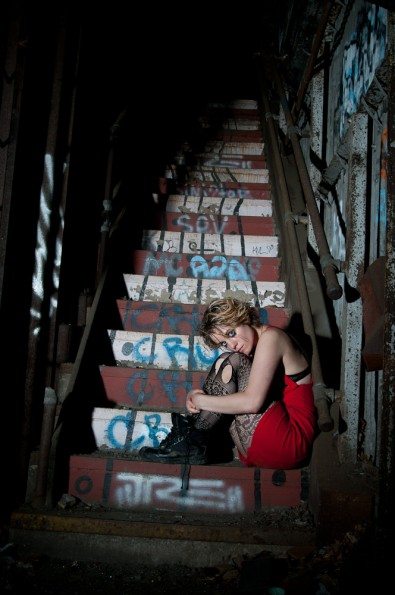
Please Support The Phoblographer
We love to bring you guys the latest and greatest news and gear related stuff. However, we can’t keep doing that unless we have your continued support. If you would like to purchase any of the items mentioned, please do so by clicking our links first and then purchasing the items as we then get a small portion of the sale to help run the website.


